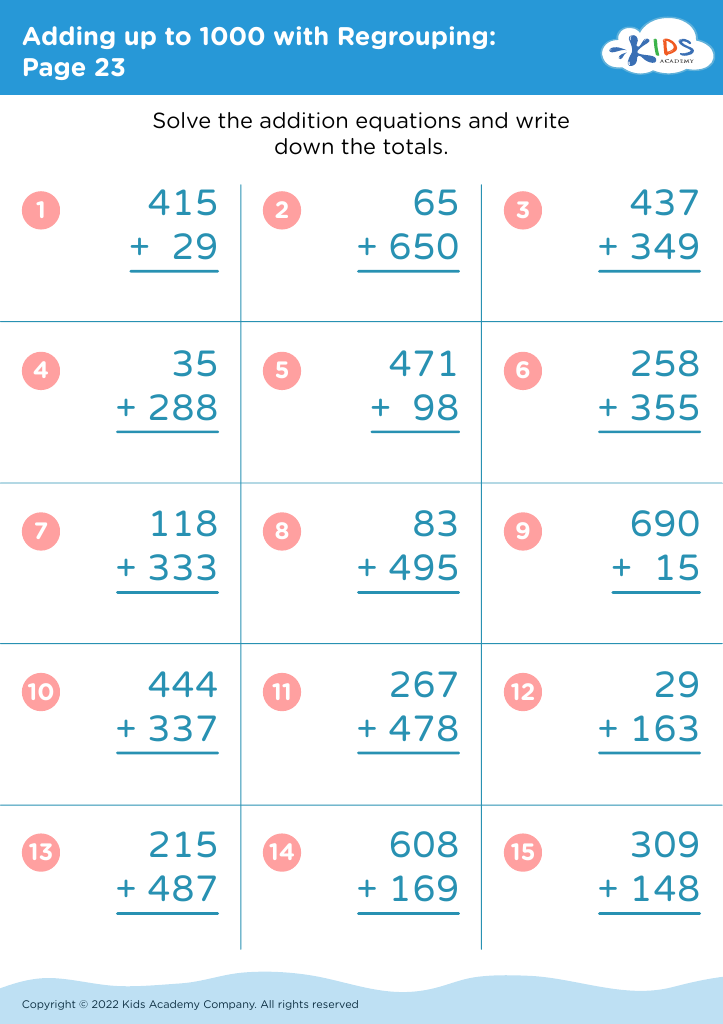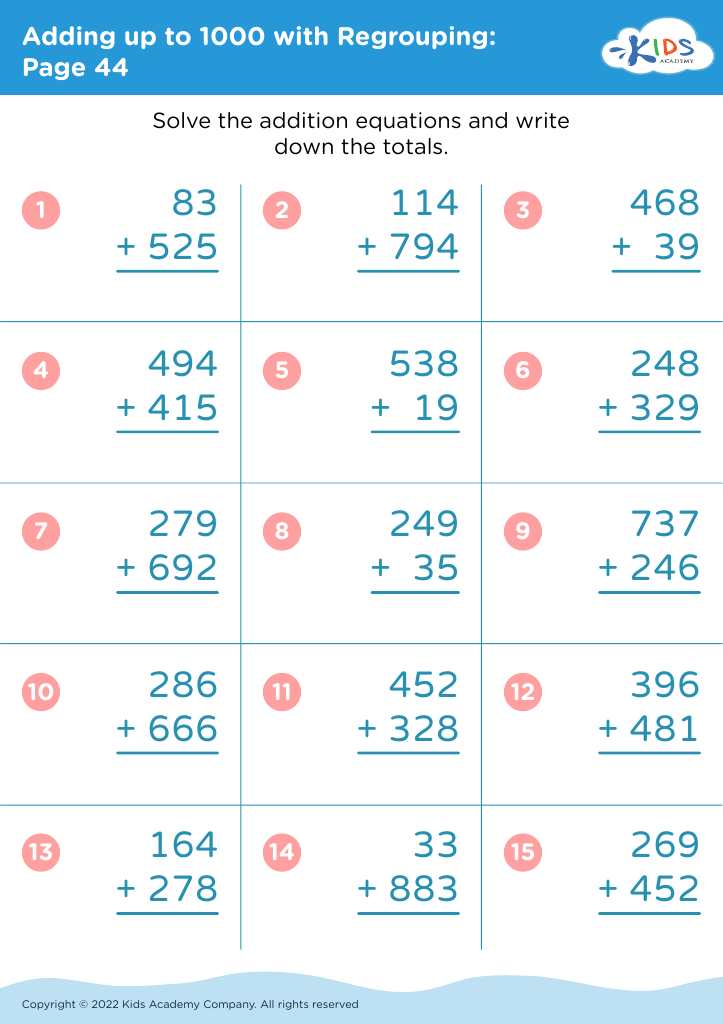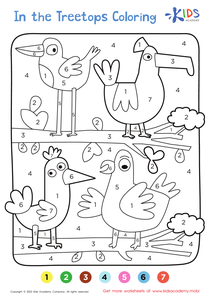Recognize patterns Grade 3 Math Worksheets
6 filtered results
-
From - To
Explore our engaging Grade 3 Math Worksheets focused on recognizing patterns! Ideal for young learners, these worksheets provide a fun way to strengthen essential mathematical skills. Students will encounter various pattern types, including numerical sequences and visual patterns, designed to enhance their analytical thinking and problem-solving abilities. Our carefully crafted resources support individualized learning, allowing children to progress at their own pace while mastering this foundational concept in math. With colorful graphics and interactive exercises, these worksheets are perfect for reinforcing classroom lessons or providing extra practice at home. Dive into the world of patterns and watch your child thrive!
Recognizing patterns is a vital skill in Grade 3 math, serving as a foundational concept that supports students’ understanding of more advanced mathematical ideas. Parents and teachers should prioritize this skill because it fosters critical thinking and problem-solving abilities. By identifying patterns, children learn to make predictions, draw conclusions, and develop logical reasoning skills that are essential not only in math but across various subjects.
Understanding patterns also enhances students' ability to grasp relationships and operations involving numbers, which directly relates to topics such as multiplication, division, and geometry. Recognizing patterns in math helps students simplify complex problems, making the learning process more intuitive and less intimidating.
Furthermore, nurturing this skill in young learners encourages confidence in their abilities. When students can successfully identify and replicate patterns, they experience a sense of achievement that motivates them to engage further with math concepts. In a world increasingly reliant on technology and data, being able to recognize patterns equips students with tools to interpret information critically, making it an indispensable skill for their future academic and professional endeavors. By supporting pattern recognition development, parents and teachers lay a strong groundwork for lifelong learning and analytical thinking.























